#akhenaten
Text
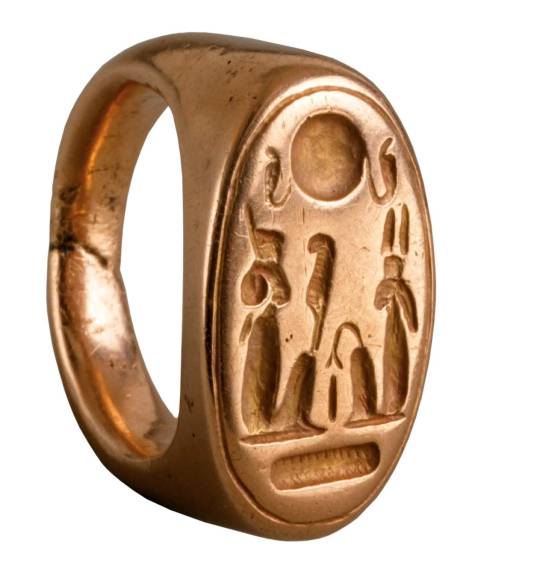
Finger Ring of Akhenaten and Nefertiti
New Kingdom, late 18th Dynasty, ca. 1353-1336 BC.
Petrie excavations, 1891-92.
Now in the Metropolitan Museum of Art. 26.7.767
This gold ring of Akhenaten and Nefertiti was found at Tell el-Amarna. The hieroglyphs may be read as an ideogram. The two seated figures are probably Akhenaten (left) and Nefertiti (right) as the deities Shu (air as indicated by the feather he holds) and Tefnut (moisture).
They were father and mother of the earth and sky, which are symbolically represented by the earth hieroglyph (below) and by the sun disk flanked by two sacred cobras (above).
Read more
315 notes
·
View notes
Text
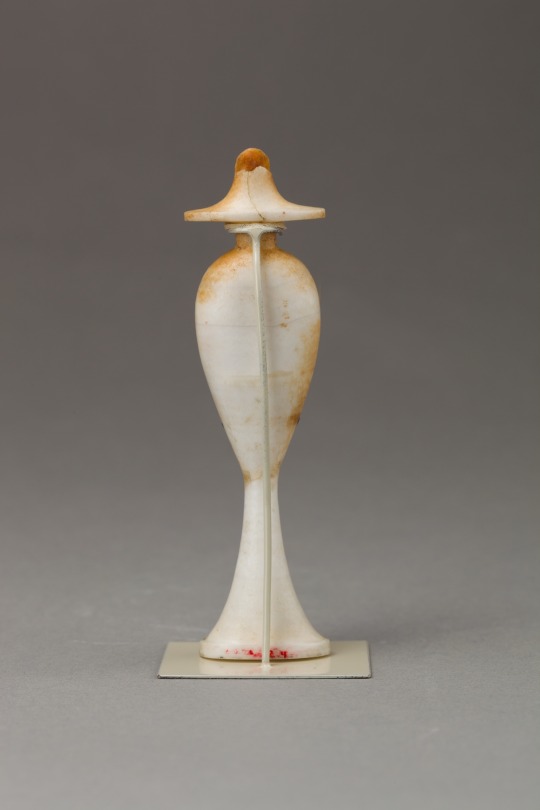


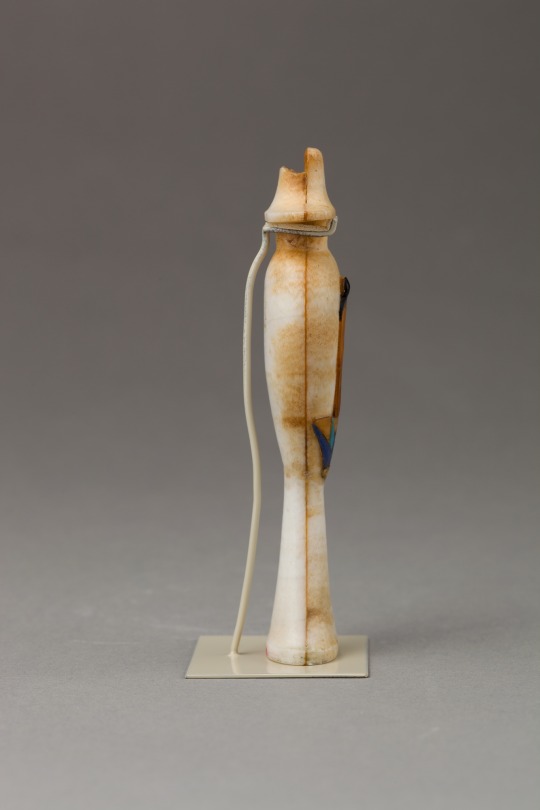
~ Perfume bottle in the shape of a hes-vase inlaid with the figure of a princess.
Period: New Kingdom, Amarna Period; 18th Dynasty; Reign of Akhenaten
Date: ca. 1353–1336 B.C.
Place of origin: Egypt; Possibly from Upper Egypt, Thebes
Medium: Travertine (Egyptian alabaster), carnelian, obsidian,gold, and colored glass inlay.
#ancient#ancient art#history#museum#archeology#ancient egypt#ancient history#archaeology#egyptology#egyptian#egypt#perfume bottle#hes-vase#princess#amarna period#18th dynasty#new kingdom#Akhenaten#thebes#ca. 1353 b.c.#ca. 1336 b.c.
763 notes
·
View notes
Text
This is what I did for my Middle Egyptian practice today. If there are any ghosts of 18th dynasty Ancient Egyptians on tumblr then I hope they find this to be a funny meme.
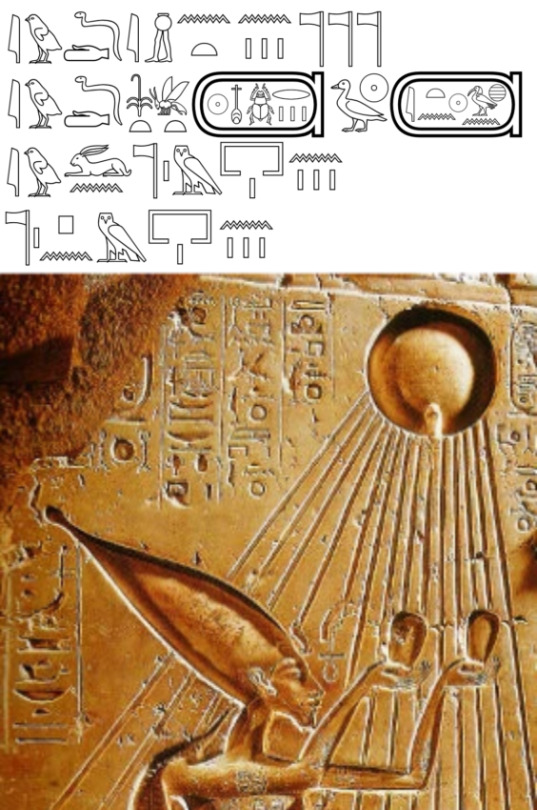
(I might have gotten something wrong here since I’m still learning the language, but this was very fun to make, especially since already I knew how to spell all the words in it except for the names.)
Translation:
Says I: “May we get gods?”
Says the King of Upper and Lower Egypt Neferkheperura Akhenaten: “There is god at home.”
This god which is at home:
#egyptian mythology#ancient egypt#akhenaten#amarna heresy#the amarna heresy#Aten#egyptology#egyptian gods#ava has thoughts#no id#undescribed#Ancient egypt stuff
484 notes
·
View notes
Text

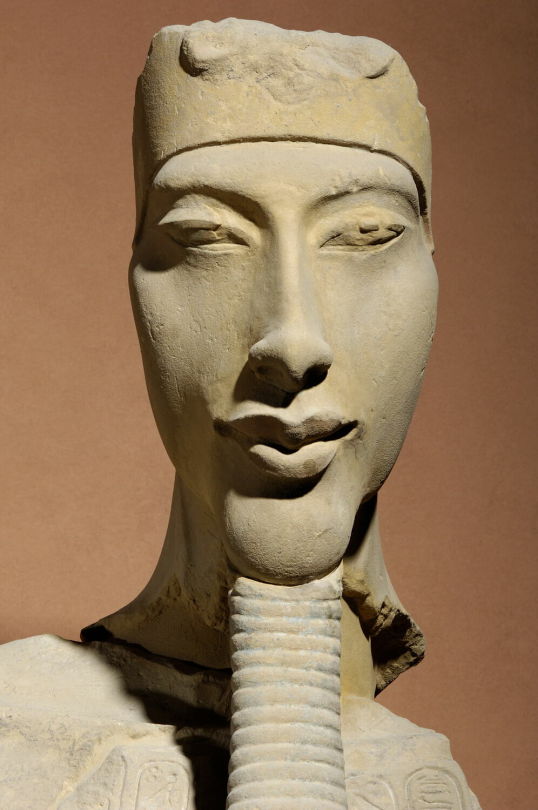

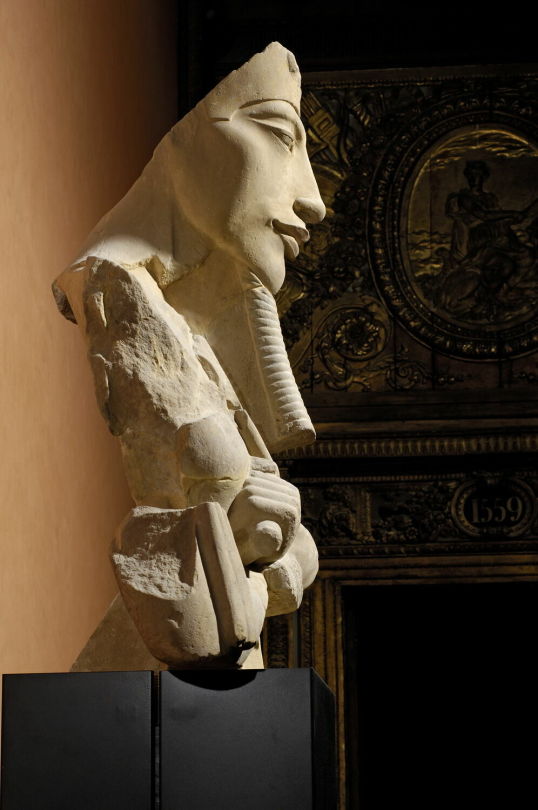


Akhenaten at Musée du Louvre, c. 1352- 1355 B.C.
283 notes
·
View notes
Text
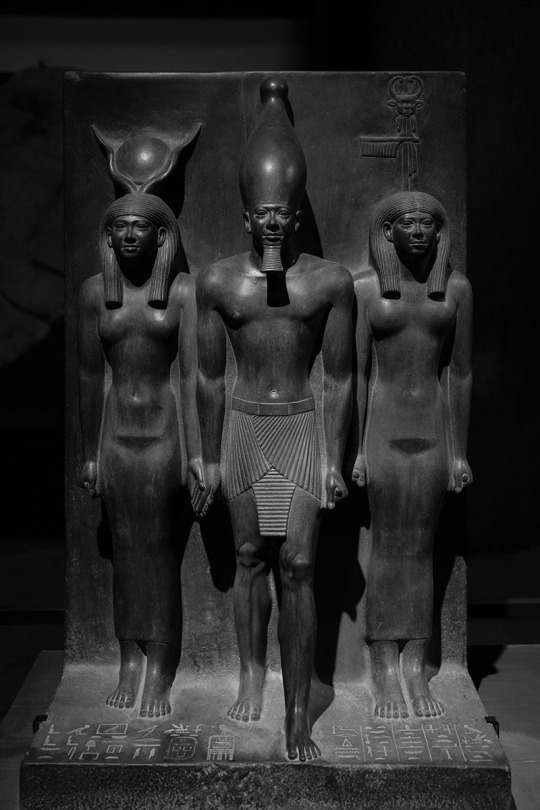
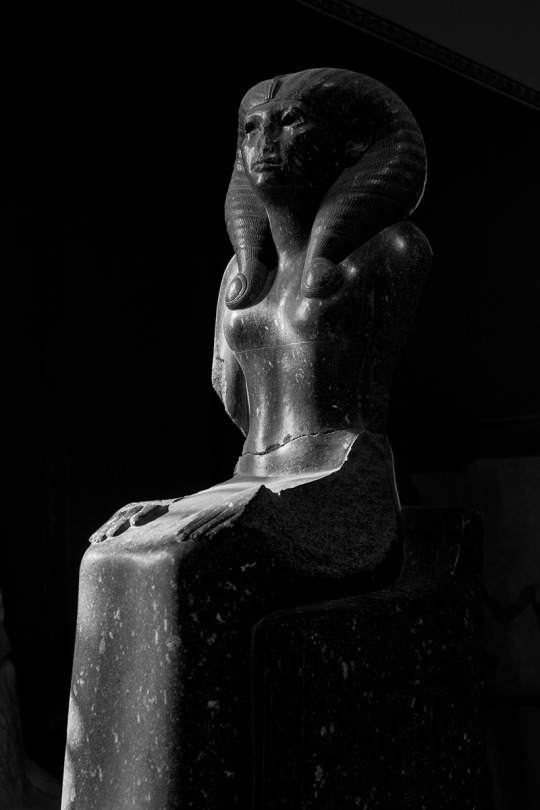

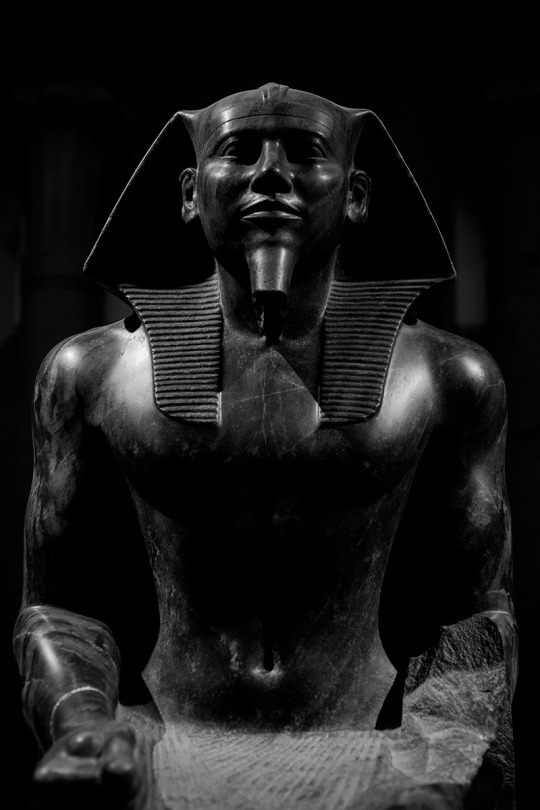
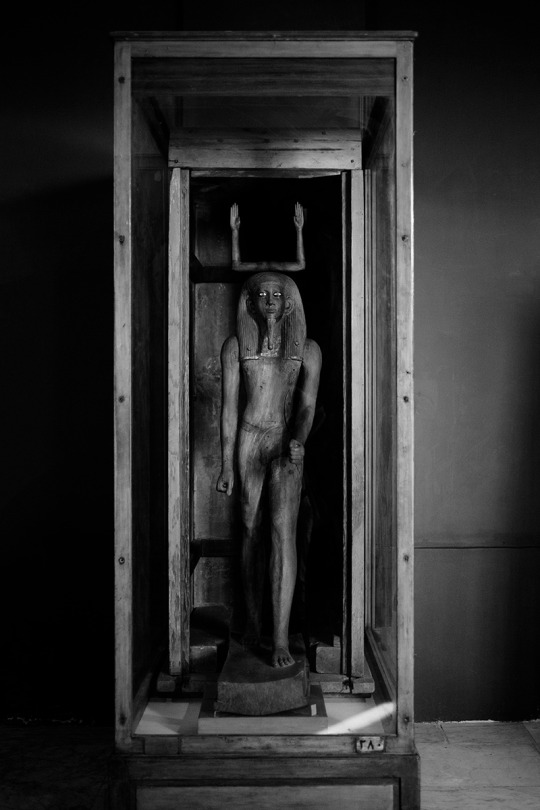
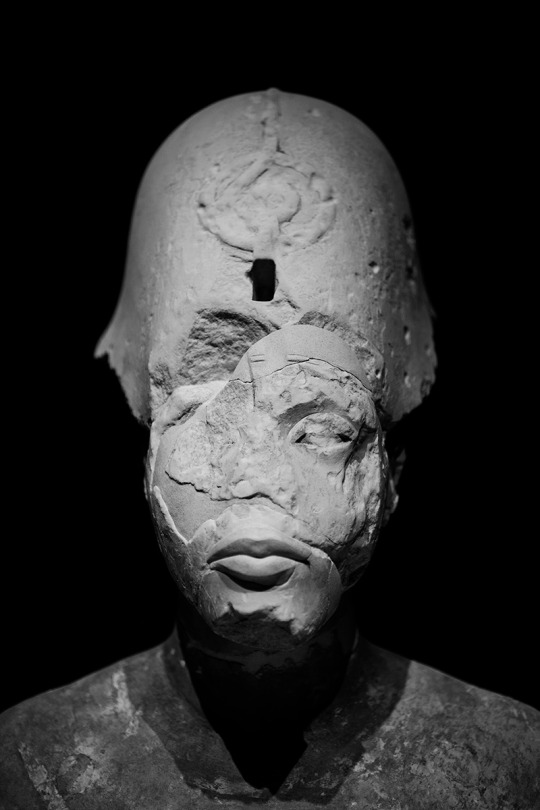
“They Have Already Landed”
(Cairo diary, 2022)
#cairo museum#ancient egypt#black and white#egyptian sculpture#ancient aliens#diary#sculpture photography#ancient civilizations#akhenaten#ka
576 notes
·
View notes
Text
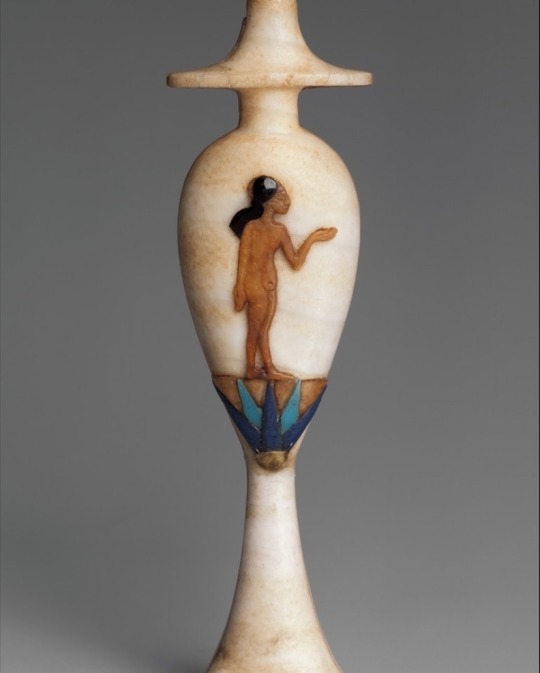
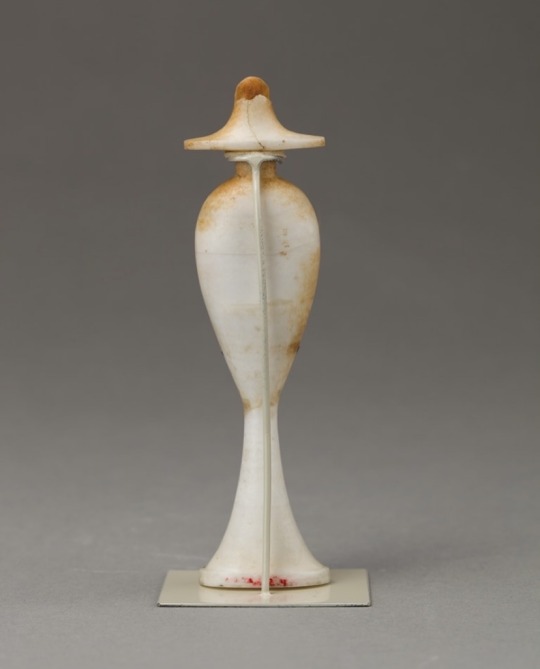
A perfume bottle in the shape of a ritual vessel (also known as a hes-vase) inlaid with a figure of a princess
Hes-vases were traditionally used in temple rituals of purification and in libations or liquid offerings. Priests would pour one out for the homies; I mean, priests would pour to the gods.
The shape resembles the hieroglyph hes, meaning 'to favour' or 'to praise'.
New Kingdom, Amarna Period; 18th Dynasty, during the reign of Akhenaten
1353-1336 BCE
#art#archaeology#ancient#ancient art#vase#egyptian art#ancient egypt#egyptology#akhenaten#ancient kemet#kemetic#kemet#perfume
348 notes
·
View notes
Text


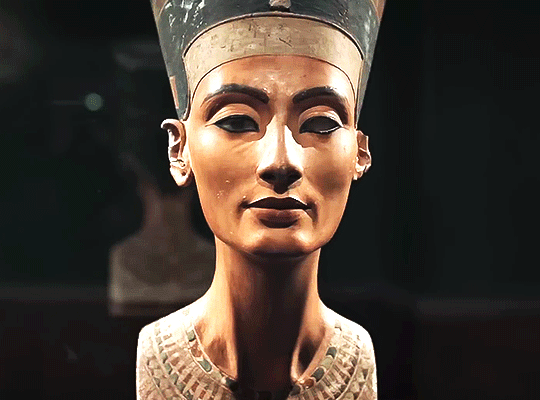
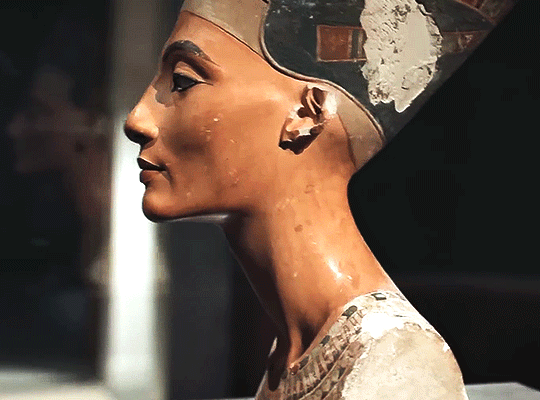
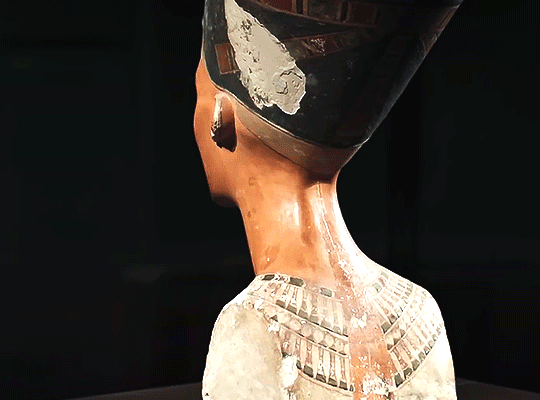
nefertiti: who does she belong to?
#nefertiti#queen nefertiti#nefertiti bust#neferneferuaten nefertiti#18th dynasty#ancient egypt#neues museum#akhenaten#echnaton#amarna#stolen artifacts#documentary#arte tv#gifs#berlin germany#egypt#egyptology
469 notes
·
View notes
Text
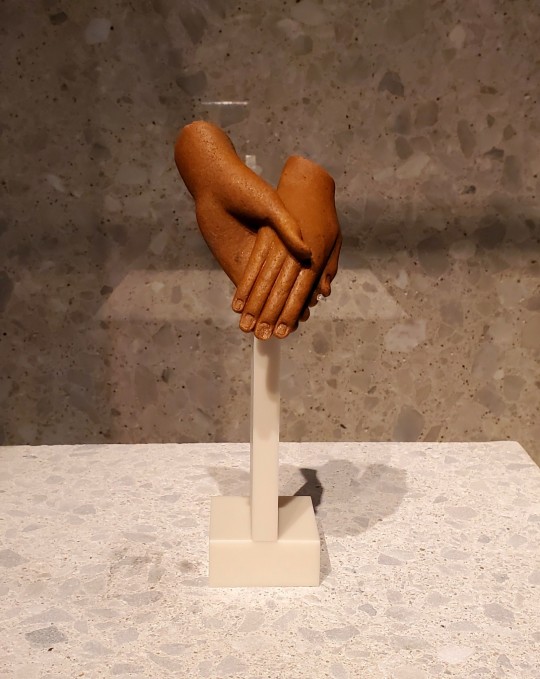
Pair of hands from a group statue of Akhenaten and Nefertiti or two princesses, 18th Dynasty of Egypt, approximately 1350 BCE from Amarna (Neues Museum, Berlin, Germany)
#isaac.jpg#egyptolology#egyptian archaeology#nefertiti#akhenaten#18th dynasty#neues museum#museumsinsel#archaeology
2K notes
·
View notes
Text
aten, the sun god (asteroid 2062)

Aton, sometimes written as Aten was a sun god. Most notably, the Pharaoh Akhenaten re-centered religion around Aton by claiming that Aton was the only god. Akhenaten built a whole city to serve as a worship epicenter for Aton. It is on Akhenaten's tomb that a hymn to Aton was written claiming that Aton is all powerful and the creator / sole god that he would follow into the underworld. IN MY OPINION Aten in your chart can represent a) where there is warmth in your life, b) where you have loyalty from an important individual, and/or c) where you receive a lot of devotion from an individual for simply existing.

i encourage you to look into the aspects of aten along with the sign, degree, and house placement. for the more advanced astrologers, take a look at the persona chart of aten AND/OR add the other characters involved to see how they support or impede aten!
OTHER RELATED ASTEROIDS: akhenaten (326290)!
like what you read? leave a tip and state what post it is for! please use my "suggest a post topic" button if you want to see a specific post or mythical asteroid next!
click here for the masterlist
click here for more egyptian myths & legends
want a personal reading? click here to check out my reading options and prices!
#akhenaten#asteroid326290#astrology#astro community#astro placements#astro chart#asteroid astrology#asteroid#natal chart#astrology tumblr#astrology readings#natal astrology#astro observations#astroblr#astro notes#astrology transits#astronotes#aten#asteroid2062#egyptain mythology#egyptian history
66 notes
·
View notes
Photo

Nose and lips from a lost statue of Akhenaten (c. 1353–1336 BC), found at Amarna either in the dumps south of the sanctuary of the Great Aten temple or in the sanctuary itself
from here
277 notes
·
View notes
Photo
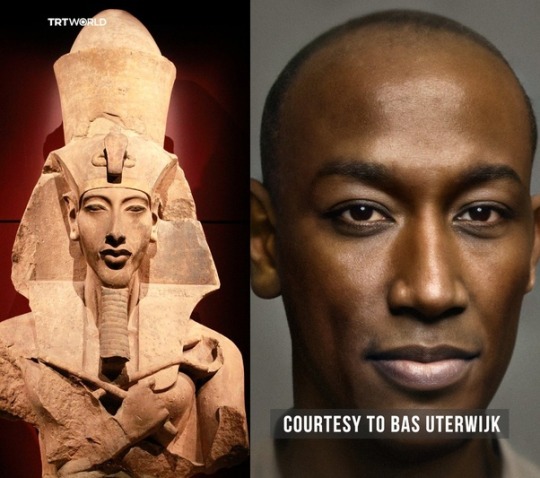
Ancient Egyptians were African. This is a facial reconstruction of King Akhenaten.
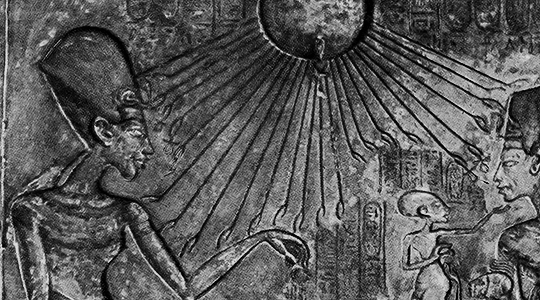
#akhenaten#african#north african#north east africa#north east african#brown skin#brownskin#kemet#ta netjer#egypt#egyptians
333 notes
·
View notes
Text

Statue of Akhenaten and Nefertiti
New Kingdom, 18th Dynasty, ca. 1353-1336 BC.
From Tell el-Amarna (Akhetaten).
Now in the Louvre. E 15593
Read more
116 notes
·
View notes
Text
The deep past of ancient Egypt is carved in stone at Abydos, where the Mortuary Temple of Seti I houses the renowned list of 76 Egyptian kings, one of the most valuable pieces of evidence on Egypt’s history.
Despite the valuable information it includes, many kings of the time did not make the list. But why?
26 notes
·
View notes
Photo
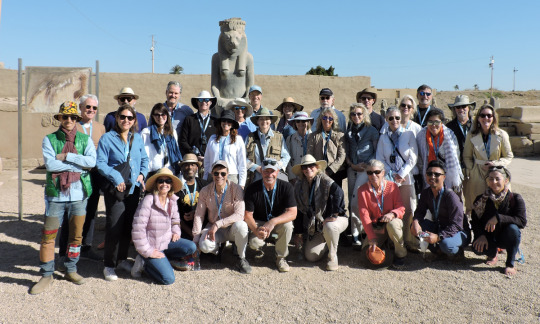
We began work on January 28, but the highlight of this week was the January 31 visit to the site by Anne Pasternak, the Brooklyn Museum Director, and members of the Museum’s Board of Governors. We were thrilled to be able to show them the site where Brooklyn has worked for the past 40+ years. We hope they enjoyed their visit.

As promised last week, here are the members of our team. Our foreman again this year is Abdel Aziz Farouk Sharid (left). He and our inspector, Haitham Mohamed Sa’ad el-Din are discussing the season’s work. The Supreme Council of Antiquities (SCA) assigns an inspector to every expedition to act as liaison with the SCA and help facilitate the work. We are happy to have Haitham with us this season.

Besides Abdel Aziz, the Qufti who working with us this year are Abdel Aziz’s brother Ayman Farouk Sharid (center), the foreman for the Johns Hopkins University expedition who works with us when Hopkins isn’t in the field; and Mamdouh Kamil, who has worked with us for many seasons. All are from the village of Quft (ancient Coptos), which has a long tradition of archaeology going back to the late 19th century. Ayman and Abdel Aziz are the sons of one of the great Egyptian archaeologists, the late Farouk Sharid Mohamed, who was a beloved friend and treasured colleague. His sons are worthy successors to him.

You are looking northwest at the first court of Temple A, which stands northeast of the Mut Temple. We are working in two areas of the court this year. In 2019 we were able to confirm that that the row of limestone features on the court’s south side were sphinx bases. This season we want to see if there are remains of corresponding bases on the north side (right). We are also clearing the corridor between the south colonnade and the south wall of the court (left).

By the end of the week (February 2) the results in the north square were equivocal. Looking north, you can see an area of decayed limestone on the right side of the square that might be the remains of a sphinx base. On February 1, Mamdouh uncovered the round, dark feature to the left of the “sphinx base” that might be a tree hole. Sphinx avenues often had trees planted between the sculptures.

The work on the corridor was more productive. By the middle of the week Ayman had cleared a mass of broken stone and revealed the lowest course of the court’s south wall (left) and the footing of the temple’s 2nd Pylon. Both sit on a sand foundation that you can see below the blocks of stone. It was common to use sand in the foundations to level out uneven ground.

On February 1 our Dutch colleague, Jacobus (Jaap) van Dijk joined us for another season. First thing on the morning of February 2, Ayman called us over to show us an interesting find: a large relief-decorated block. Jaap immediately got down to have a look.

The block has a beautifully carved relief of Amun that clearly is Thutmoside in style, that is, from the reign of Hatshepsut and/or Thutmosis III, of the mid-15th century BC. What makes it particularly interesting is the small, shallowly carved graffito of a God’s Wife of Amun facing the Amun and dating stylistically to Dynasty 25 or 26, about 700 years after the god’s face was carved. God’s Wives of Amun were priestesses, usually the sisters or daughters of kings, who wielded great political power in the Third Intermediate Period and later.
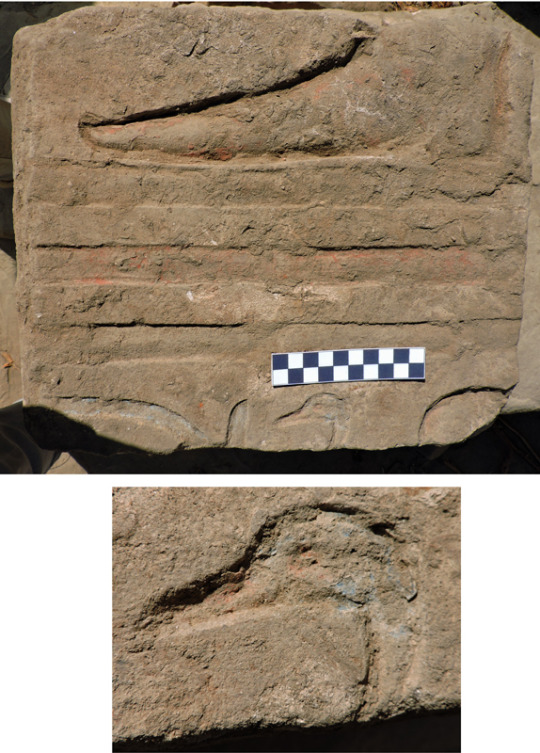
Just west of the Amun block was smaller cube of stone with a sunk relief depiction of a man’s foot on base lines with the top of a cartouche and the “son of Re” title below. The style of the foot (very long) and the vertical element of the cartouche date it to the reign of Akhenaten. It probably came originally from his temple in East Karnak, built before the king moved the capital to Amarna. The artist paid attention to detail when painting the relief, painting the head of the goose (“son”) blue but its beak and eye red. The Brooklyn Museum has an interesting group of Amarna Period reliefs showing a pastoral scene.

By the end of the week Ayman and his crew had cleared the bases of the first 3 columns of the colonnade, working from west to east. The blocks of the bases are large: 70 cm by 125 cm and almost 100 cm thick.
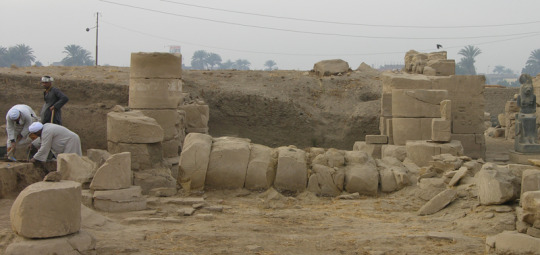
We are also planning on restoring 2 fallen columns in the colonnaded porches in front of the Mut Temple. The one in the East Porch is shown here as it was found in 1979. Work hasn’t started on these yet; there will be more about the restoration next week.
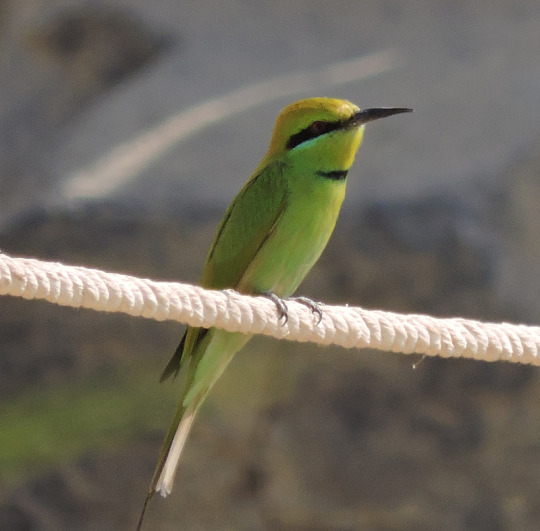
One of our favorite birds is the tiny, bright bee eater, so called because it catches insects in mid-air. This is the first we’ve seen this season.

An unusual cloud formation seen at sunset one night. Angels? Extraterrestrials?
Posted by Richard Fazzini and Mary McKercher
#BkMMutDig#MutDig#Mut#temple#Egypt#excavation#BkMEgyptianArt#egyptian art#egyptian#amarna period#Akhenaten#Thutmoside#archaeology#Brooklyn Museum#brooklyn#museum#art
223 notes
·
View notes
Text
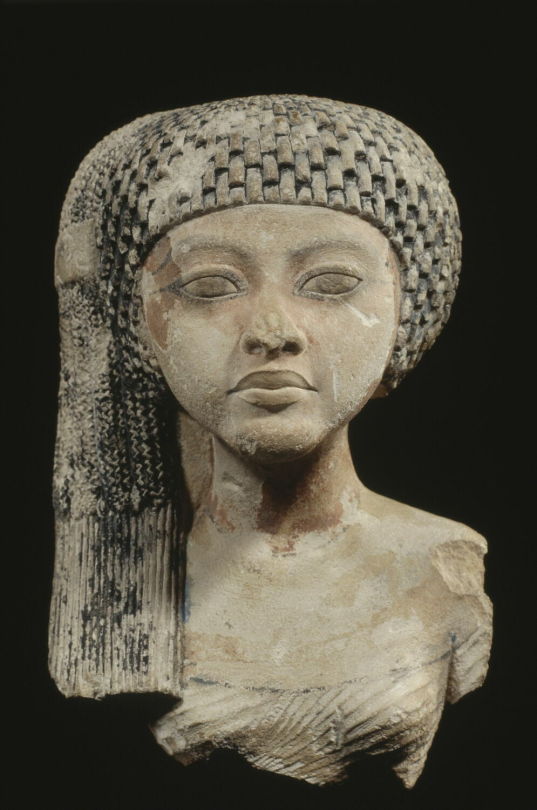
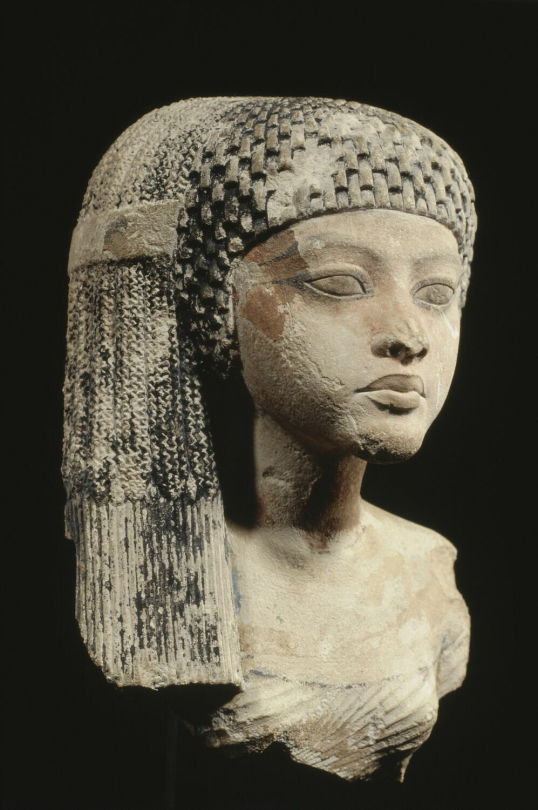



head of a princess, possibly a daughter of nefertiti & akhenaten, perhaps meritaten, c. 1352-1330 b.c.
musée du louvre, département des antiquités égyptiennes, E 14715.
87 notes
·
View notes
Photo
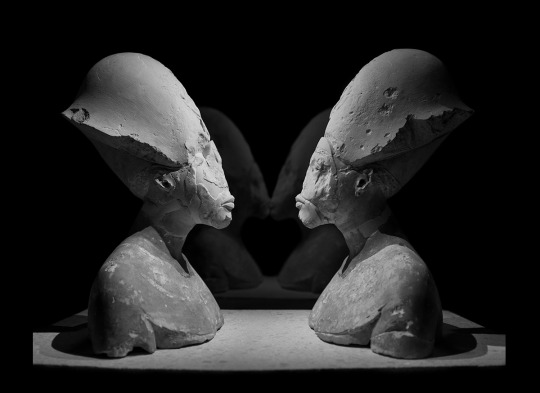
“When I Met You”
(Bust of Akhenaten, Neues Museum in Berlin)
#akhenaten#egypt#sculpture#twins#gemini#kiss#dialog#berlin museum#reflection#diary#idealism#ancient mystery#self love
75 notes
·
View notes